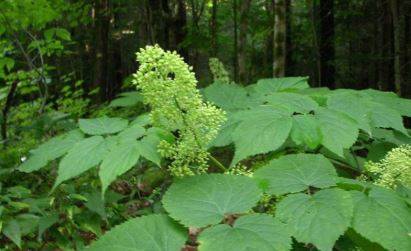Spikenard: Connecting our mountains with the Bible
Published 10:40 am Monday, August 5, 2019
As a botany nut I’m always amazed at the diversity of plants we have in the mountains, as I’m constantly coming across plants I don’t know. One I’ve observed for a number of years but only recently caught it in bloom to identify it is Spikenard, which is mentioned in the Bible several times. The most familiar one is its use to anoint the head and feet of Jesus just prior to His crucifixion.
The ointment spikenard mentioned in the King James version (and as “nard” in other Bible translations) was derived from a plant by the same name that grew in the Himalayan mountains and so had to be shipped long distances to the Holy Land. An essential oil that was distilled out of the roots was very aromatic and had numerous uses. The Romans used it as a medicinal to make perfumes. It was used as an incense offering by the Hebrews in the Jerusalem Temple. In Old Testament times pungent perfumes and oils were used to prepare a body for burial, which was why the act of anointing Jesus’ head with spikenard prior to His crucifixion was highly symbolic. Because it was imported from distance lands and extracting the oil was complex, it was very costly. Spikenard or nard is mentioned in Mark 14:3, John 12:3, and Song of Solomon 14:13.
The plant used in biblical times is not even closely related to American Spikenard found in moist forests of our Appalachian Mountains. The Himalayan plant is small with flowers similar to red clover. Our Spikenard looks more like a bush but is actually a herbaceous perennial. It is often wider than it is tall and can reach three feet in height and width. It has compound leaves that are twice divided, and each leaflet is roughly heart shaped with a toothed edge.
The stem is a purplish color. The flowers are a spike of small, white blooms that form in round clusters, and bloom in late summer. I was curious as to why our local plant was given the same name as the biblical variety but couldn’t find a definitive connection, but I think I can offer a possibility.
The roots of both species are very aromatic, with a smell described as “balsamic”, which I take to mean medicine-ey or perhaps resinous. To me our native Spikenard has a spicy smell. Another similarity is that both roots have a cluster of black tendrils near the root crown that look like a clump of hair. I’m assuming whoever first discovered the American Spikenard saw the resemblance and named it accordingly.
American Spikenard is in the same plant family as ginseng and has similar chemical properties. It has traditionally been used as a medicinal plant to treat coughs, asthma, lung ailments, rheumatism, and kidney ailment. Native Americans used a root tea for menstrual irregularities, lung issues and cough, and to flavor other medicines. The root was also used as a poultice to treat infections, swelling, and wounds. As a flavoring it was used to make a flavorful tea, root beer, and a spice.







